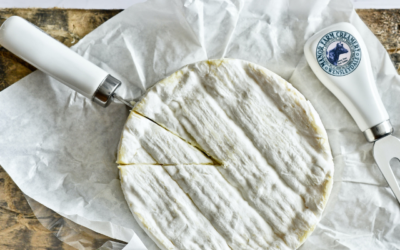As far back in history we can go humans have been eating seafood,
both from fresh water streams and the ocean. Some cultures rely very
heavily on fish in order to survive even today.
both from fresh water streams and the ocean. Some cultures rely very
heavily on fish in order to survive even today.
Fish as far as authorities go has never really lost favour as a
good reliable healthy food source although there have been regions where
it has been recommended that fish are not eaten, such as Gladstone and
Sydney Harbour due to pollution of the water, areas of the Pacific Ocean
due to the increase in the plastic soup. Some books don’t recommend
fish for pregnant women due to the mercury level and others fear the
pollutions in the ocean such as DDT and the like which have made our
fish toxic. But let’s put this all in perspective.
good reliable healthy food source although there have been regions where
it has been recommended that fish are not eaten, such as Gladstone and
Sydney Harbour due to pollution of the water, areas of the Pacific Ocean
due to the increase in the plastic soup. Some books don’t recommend
fish for pregnant women due to the mercury level and others fear the
pollutions in the ocean such as DDT and the like which have made our
fish toxic. But let’s put this all in perspective.
Fish are wonderful sources of protein, omega 3 fats, zinc, B12,
phosphorus, calcium, iron selenium and so much more. I’ve just plucked
out a few key nutrients that may be missing form other food sources that
would make this food an important part of the diet. Different types of
seafood have different attributes, for example oysters are a rich
source of zinc and selenium and I believe should be eaten weekly, you
only need a few in order to get your nutritional needs. Salmon (wild if
you can get it) abounds with omega 3 fats, small fish, the ones at the
bottom of the food chain have less pollutants. As most of you know, Inca Inchi Oil has just been released in the Changing Habits store, composing of 48% of omega 3 fatty acids (Alpha-Linolenic), which are the
precursors to EPA and DHA (fats found in fish oils), along with 84% of
the essential fatty acids. So if fish isn’t your thing, Inca Inchi oil will help you out.
phosphorus, calcium, iron selenium and so much more. I’ve just plucked
out a few key nutrients that may be missing form other food sources that
would make this food an important part of the diet. Different types of
seafood have different attributes, for example oysters are a rich
source of zinc and selenium and I believe should be eaten weekly, you
only need a few in order to get your nutritional needs. Salmon (wild if
you can get it) abounds with omega 3 fats, small fish, the ones at the
bottom of the food chain have less pollutants. As most of you know, Inca Inchi Oil has just been released in the Changing Habits store, composing of 48% of omega 3 fatty acids (Alpha-Linolenic), which are the
precursors to EPA and DHA (fats found in fish oils), along with 84% of
the essential fatty acids. So if fish isn’t your thing, Inca Inchi oil will help you out.
There are two types of fish now at your fish market; farmed and
wild. Like any domesticated creature most farmed fish are fed a less
then adequate diet, it is usually a refined diet with some colours in it
to increase the colour of the fish. These fish are often held in
crowded conditions in ocean pens or concrete fresh water tanks which
means disease is more prevalent and the use of antibiotics is
needed. These fish are much like the animals you hear about that have
been in feed lots or crowded chicken coops.
wild. Like any domesticated creature most farmed fish are fed a less
then adequate diet, it is usually a refined diet with some colours in it
to increase the colour of the fish. These fish are often held in
crowded conditions in ocean pens or concrete fresh water tanks which
means disease is more prevalent and the use of antibiotics is
needed. These fish are much like the animals you hear about that have
been in feed lots or crowded chicken coops.
Consider this; the chemical composition of a wild animal or fish
consuming a wild and natural diet, getting plenty of exercise, and being
taken care of by its pack is considerably different than the chemical
composition of an animal raised in inhumanely tight and stressful
quarters, consuming an unnatural diet of corn and soy and getting very
little to no activity. These two types of animals are so different in
fact, that one actually makes you healthier when you eat it, while the
other makes you sicker. And the same goes for fish.
consuming a wild and natural diet, getting plenty of exercise, and being
taken care of by its pack is considerably different than the chemical
composition of an animal raised in inhumanely tight and stressful
quarters, consuming an unnatural diet of corn and soy and getting very
little to no activity. These two types of animals are so different in
fact, that one actually makes you healthier when you eat it, while the
other makes you sicker. And the same goes for fish.
There is a real problem though with wild fish and the pollutants in
our oceans, hormone disruptors from the plastic soup and industrial and
agricultural wastes that leak into our water ways and oceans. There is
also some concern about the mercury in our fish and as a result there
are people who refuse to eat fish. But let’s put this in perspective.
our oceans, hormone disruptors from the plastic soup and industrial and
agricultural wastes that leak into our water ways and oceans. There is
also some concern about the mercury in our fish and as a result there
are people who refuse to eat fish. But let’s put this in perspective.
The human body has a wonderful loss system which works
brilliantly when we eat real, healthy foods. Green leafy vegetables
especially have the ability to draw out toxins from the body. So when
you eat fish make sure you have a large salad, with a mix of salad
greens and your body will help you rid itself of toxic wastes better
then if you gave your self a serving of chips. Let’s face it most food
is polluted these days, but lets eat the best of the food so that we can
thrive in health and energy.
brilliantly when we eat real, healthy foods. Green leafy vegetables
especially have the ability to draw out toxins from the body. So when
you eat fish make sure you have a large salad, with a mix of salad
greens and your body will help you rid itself of toxic wastes better
then if you gave your self a serving of chips. Let’s face it most food
is polluted these days, but lets eat the best of the food so that we can
thrive in health and energy.
As much as possible I try to eat beef that grazes on grass and
lives with space, I like chicken that is free range and organic and as
far as my fish goes I love wild fish and if someone catches it for me,
rather then me having to go to the fish market it is like a dream come
true.
lives with space, I like chicken that is free range and organic and as
far as my fish goes I love wild fish and if someone catches it for me,
rather then me having to go to the fish market it is like a dream come
true.
Recipe – Asian Style Snapper
Ingredients (serves 4)
4 green spring onions – ends trimmed, thinly sliced diagonally
2 TBS ginger – finely shredded
1 long red chilli – deseeded, thinly sliced
1 x 800gms whole snapper – scaled and gutted
2 TBS Mirin
2 TBS Tamari
2 TBS tsp sesame oil
1/4 cup firmly packed fresh coriander leaves
Method
Pre heat oven to 180C fan forced
1. Combine the spring onions, ginger and chilli in a small bowl.
Sprinkle one-third of the shallot mixture over a large ovenproof dish.
Place the fish on the on the dish. Place half the remaining shallot
mixture evenly in the fish cavity. Sprinkle the remaining shallot
mixture over the top of the fish.
Sprinkle one-third of the shallot mixture over a large ovenproof dish.
Place the fish on the on the dish. Place half the remaining shallot
mixture evenly in the fish cavity. Sprinkle the remaining shallot
mixture over the top of the fish.
2. Whisk together the Chinese rice wine, tamari and sesame oil in a
small bowl. Pour evenly over the fish cover the fish with tin foil.
small bowl. Pour evenly over the fish cover the fish with tin foil.
3. Place the fish in the oven for approximately 20 minutes or
until fish flakes easily when tested with a fork in the thickest part.
Remove from oven.
until fish flakes easily when tested with a fork in the thickest part.
Remove from oven.
4. Sprinkle the fish evenly with coriander. Serve with a fresh leafy green salad and green beans.
Cyndi O’Meara
P.O. Box 104
Mooloolaba Q 4557
International Speaker, Best Selling Author, TV and Radio Presenter.
Awesome results gained from the 21 day healthy weight loss
challenge. To obtain this weight loss information go to
www.changinghabits.com.au today!
challenge. To obtain this weight loss information go to
www.changinghabits.com.au today!







0 Comments